Graph Algorithms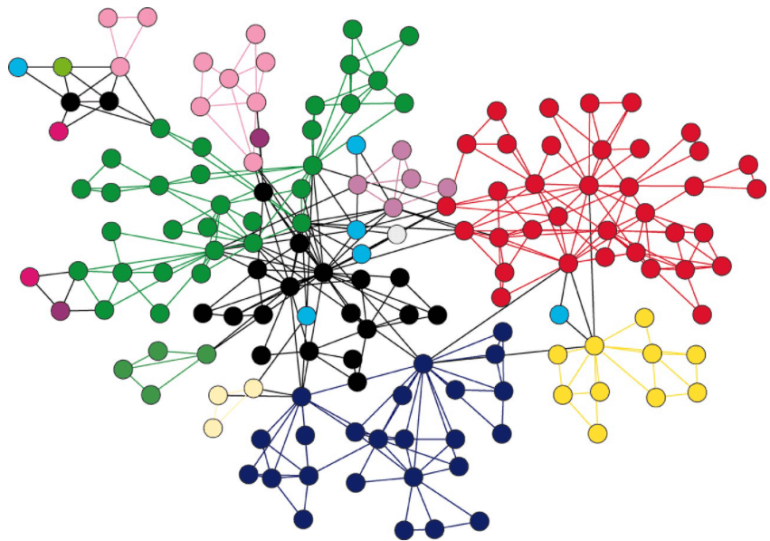
In this article, you would be learning a brief explanation of some of the most used graph algorithms, which have massive applications in today's words. Graphs cover most high-level data structure techniques that one experiences while implementing them and to know which graph algorithm is best for the moment effectively is what you would be learning here. First, let's get a clear idea from the very basics about graphs. What is a Graph?A graph is a unique data structure in programming that consists of finite sets of nodes or vertices and a set of edges that connect these vertices to them. At this moment, adjacent vertices can be called those vertices that are connected to the same edge with each other. In simple terms, a graph is a visual representation of vertices and edges sharing some connection or relationship. Although there are plenty of graph algorithms that you might have been familiar with, only some of them are put to use. The reason for this is simple as the standard graph algorithms are designed in such a way to solve millions of problems with just a few lines of logically coded technique. To some extent, one perfect algorithm is solely optimized to achieve such efficient results. Types of GraphsThere are various types of graph algorithms that you would be looking at in this article but before that, let's look at some types of terms to imply the fundamental variations between them. Order: Order defines the total number of vertices present in the graph. Size: Size defines the number of edges present in the graph. Self-loop: It is the edges that are connected from a vertex to itself. Isolated vertex: It is the vertex that is not connected to any other vertices in the graph. Vertex degree: It is defined as the number of edges incident to a vertex in a graph. Weighted graph: A graph having value or weight of vertices. Unweighted graph: A graph having no value or weight of vertices. Directed graph: A graph having a direction indicator. Undirected graph: A graph where no directions are defined. 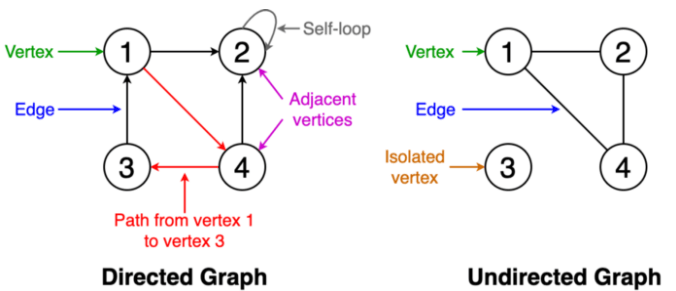
Let's now carry forward the main discussion and learn about different types of graph algorithms. Breadth-First SearchTraversing or searching is one of the most used operations that are undertaken while working on graphs. Therefore, in breadth-first-search (BFS), you start at a particular vertex, and the algorithm tries to visit all the neighbors at the given depth before moving on to the next level of traversal of vertices. Unlike trees, graphs may contain cyclic paths where the first and last vertices are remarkably the same always. Thus, in BFS, you need to keep note of all the track of the vertices you are visiting. To implement such an order, you use a queue data structure which First-in, First-out approach. To understand this, see the image given below. 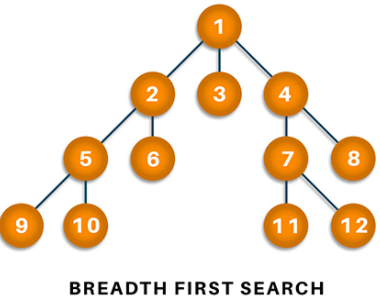
Algorithm
Pseudocode Complexity: 0(V+E) where V is vertices and E is edges. Applications BFS algorithm has various applications. For example, it is used to determine the shortest path and minimum spanning tree. It is also used in web crawlers to creates web page indexes. It is also used as powering search engines on social media networks and helps to find out peer-to-peer networks in BitTorrent. Depth-first searchIn depth-first-search (DFS), you start by particularly from the vertex and explore as much as you along all the branches before backtracking. In DFS, it is essential to keep note of the tracks of visited nodes, and for this, you use stack data structure. 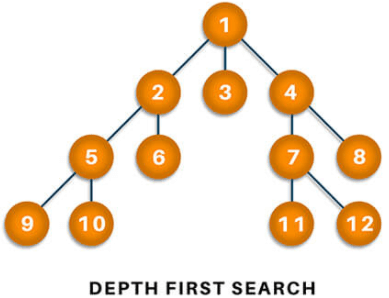
Algorithm
Pseudocode Applications DFS finds its application when it comes to finding paths between two vertices and detecting cycles. Also, topological sorting can be done using the DFS algorithm easily. DFS is also used for one-solution puzzles. Dijkstra's shortest path algorithmDijkstra's shortest path algorithm works to find the minor path from one vertex to another. The sum of the vertex should be such that their sum of weights that have been traveled should output minimum. The shortest path algorithm is a highly curated algorithm that works on the concept of receiving efficiency as much as possible. Consider the below diagram. 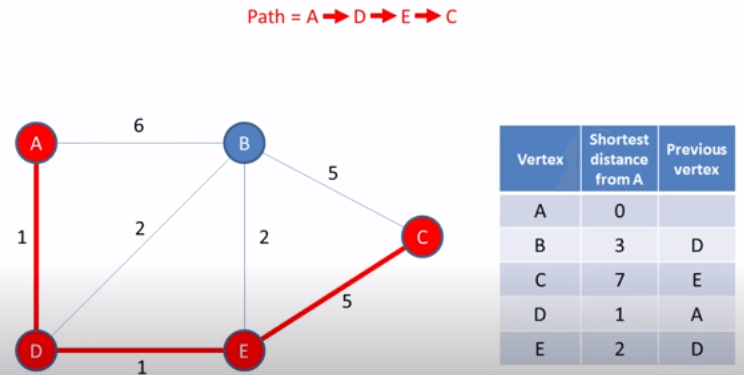
Algorithm
Pseudocode Applications Dijkstra's shortest path algorithm is used in finding the distance of travel from one location to another, like Google Maps or Apple Maps. In addition, it is highly used in networking to outlay min-delay path problems and abstract machines to identify choices to reach specific goals like the number game or move to win a match. Cycle detectionA cycle is defined as a path in graph algorithms where the first and last vertices are usually considered. For example, if you start from a vertex and travel along a random path, you might reach the exact point where you eventually started. Hence, this forms a chain or cyclic algorithm to cover along with all the nodes present on traversing. Therefore, cycle detection is based on detecting this kind of cycle. Consider the below image. 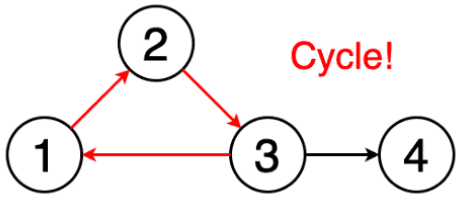
Pseudocode Applications Cyclic algorithms are used in message-based distributed systems and large-scale cluster processing systems. It is also mainly used to detect deadlocks in the concurrent system and various cryptographic applications where the keys are used to manage the messages with encrypted values. Minimum Spanning TreeA minimum spanning is defined as a subset of edges of a graph having no cycles and is well connected with all the vertices so that the minimum sum is availed through the edge weights. It solely depends on the cost of the spanning tree and the minimum span or least distance the vertex covers. There can be many minimum spanning trees depending on the edge weight and various other factors. 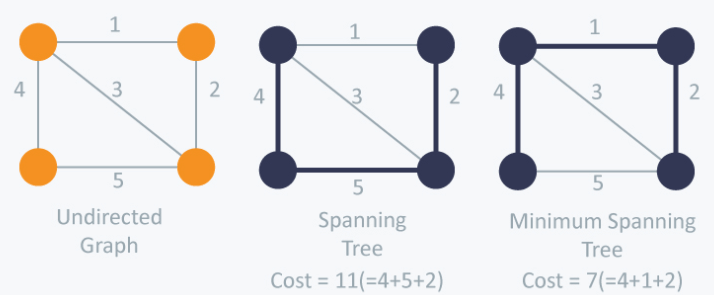
Pseudocode Applications Minimum spanning tree finds its application in the network design and is popularly used in traveling salesman problems in a data structure. It can also be used to find the minimum-cost weighted perfect matching and multi-terminal minimum cut problems. MST also finds its application in the field of image and handwriting recognition and cluster analysis. Topological sortingTopological sorting of a graph follows the algorithm of ordering the vertices linearly so that each directed graph having vertex ordering ensures that the vertex comes before it. Users can understand it more accurately by looking at the sample image given below. 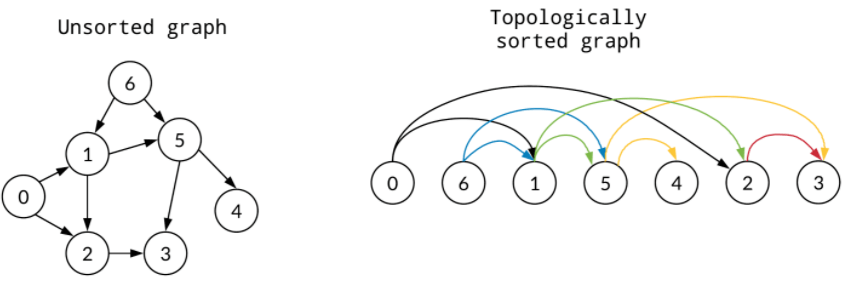
In the above example, you can visualize the ordering of the unsorted graph and topologically sorted graph. The topologically sorted graph ensures to sort vertex that comes in the pathway. Pseudocode Application Topological sorting covers the room for application in Kahn's and DFS algorithms. In real-life applications, topological sorting is used in scheduling instructions and serialization of data. It is also popularly used to determine the tasks that are to be compiled and used to resolve dependencies in linkers. Graph coloringGraph coloring algorithms follow the approach of assigning colors to the elements present in the graph under certain conditions. The conditions are based on the techniques or algorithms. Hence, vertex coloring is a commonly used coloring technique followed here. First, in this method, you try to color the vertex using k color, ensuring that two adjacent vertexes should not have the same color. Other method includes face coloring and edge coloring. Both of these methods should also ensure that no edge or face should be inconsequent color. The coloring of the graph is determined by knowing the chromatic number, which is also the smaller number of colors needed. Consider the below image to understand how it works. 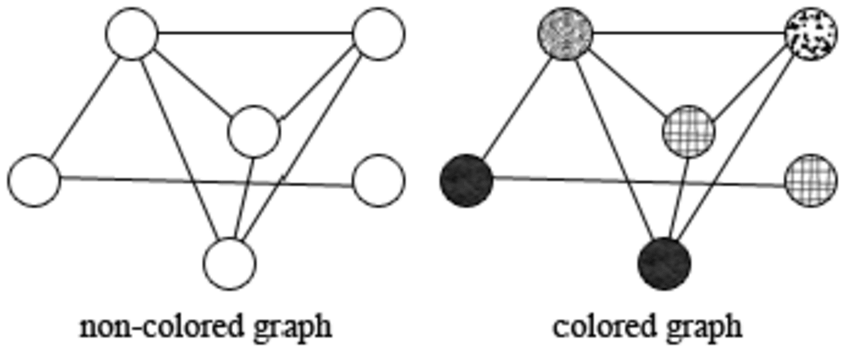
Pseudocode Application Graph coloring has vast applications in data structures as well as in solving real-life problems. For example, it is used in timetable scheduling and assigning radio frequencies for mobile. It is also used in Sudoko and to check if the given graph is bipartite. Graph coloring can also be used in geographical maps to mark countries and states in different colors. Maximum flowThe maximum flow algorithm is usually treated as a problem-solving algorithm where the graph is modeled like a network flow infrastructure. Hence, the maximum flow is determined by finding the path of the flow that has the maximum flow rate. The maximum flow rate is determined by augmenting paths which is the total flow-based out of source node equal to the flow in the sink node. Below is the illustration for the same. Applications Like you, the maximum flow problem covers applications of popular algorithms like the Ford-Fulkerson algorithm, Edmonds-Karp algorithm, and Dinic's algorithm, like you saw in the pseudocode given above. In real life, it finds its applications in scheduling crews in flights and image segmentation for foreground and background. It is also used in games like basketball, where the score is set to a maximum estimated value having the current division leader. MatchingA matching algorithm or technique in the graph is defined as the edges that no common vertices at all. Matching can be termed maximum matching if the most significant number of edges possibly matches with as many vertices as possible. It follows a specific approach for determining full matches, as shown in the below image. 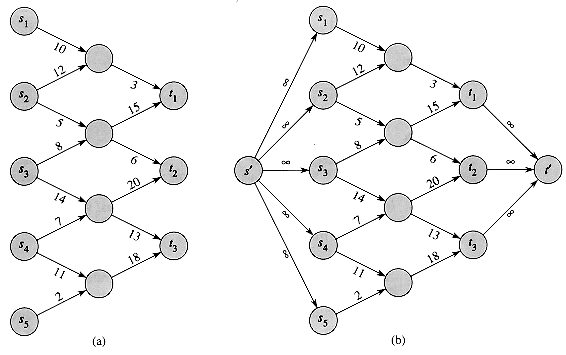
Applications Matching is used in an algorithm like the Hopcroft-Karp algorithm and Blossom algorithm. It can also be used to solve problems using a Hungarian algorithm that covers concepts of matching. In real-life examples, matching can be used resource allocation and travel optimization and some problems like stable marriage and vertex cover problem. ConclusionIn this article, you came across plenty of graph coloring algorithms and techniques that find their day-to-day applications in all instances of real life. You learned how to implement them according to situations, and hence the pseudo code helped you process the information strategically and efficiently. Graph algorithms are considered an essential aspect in the field confined not only to solve problems using data structures but also in general tasks like Google Maps and Apple Maps. However, a beginner might find it hard to implement Graph algorithms because of their complex nature. Hence, it is highly recommended to go through this article since it covers everything from scratch.
Next TopicTime Complexity of Sorting Algorithms
|
 For Videos Join Our Youtube Channel: Join Now
For Videos Join Our Youtube Channel: Join Now
Feedback
- Send your Feedback to [email protected]
Help Others, Please Share









